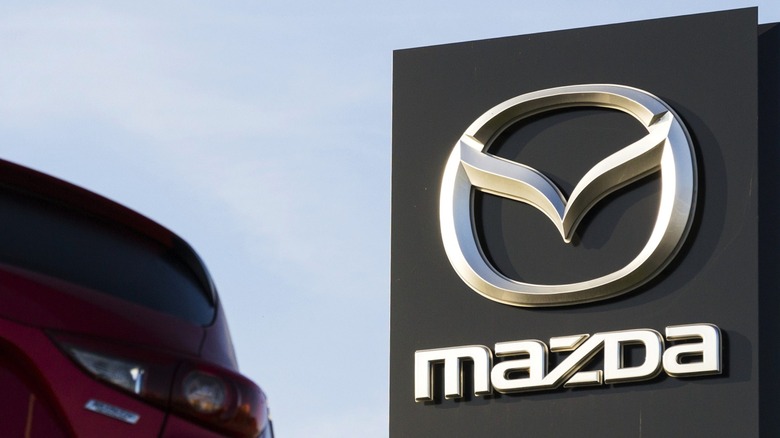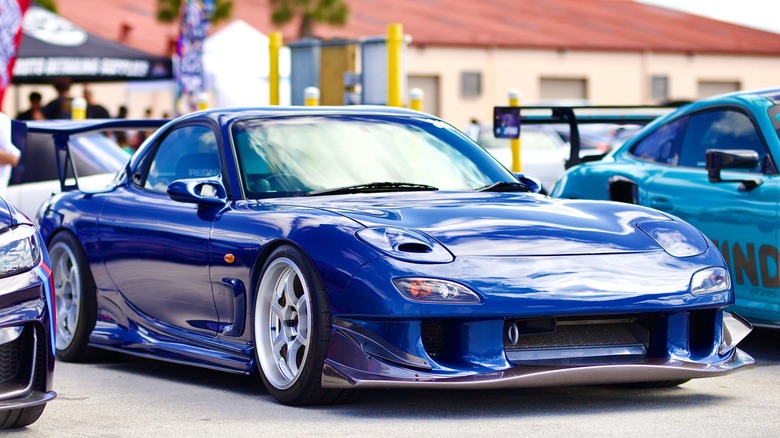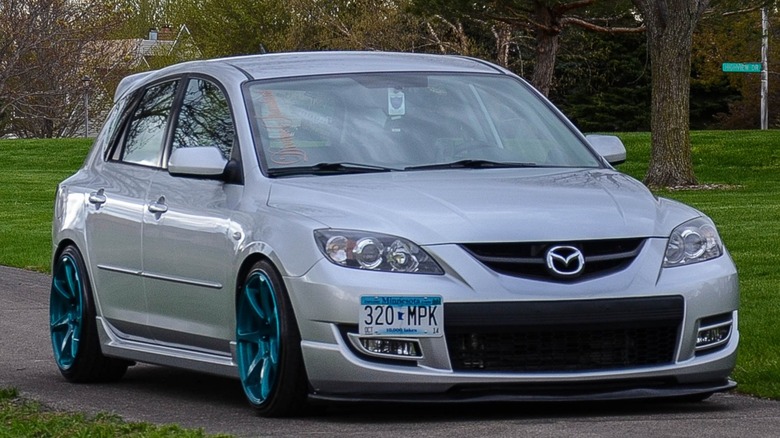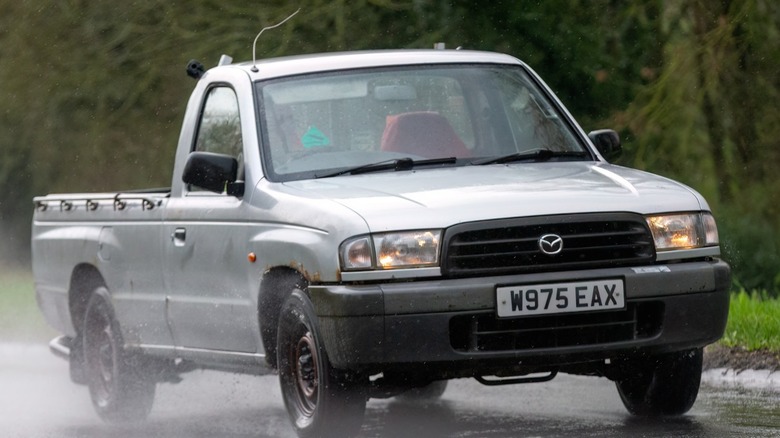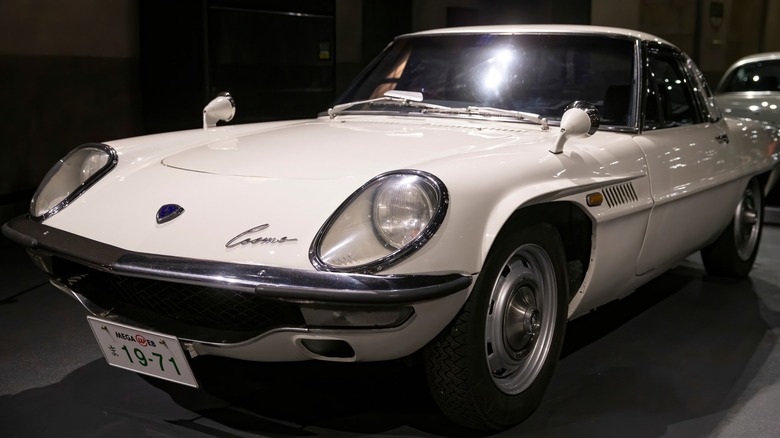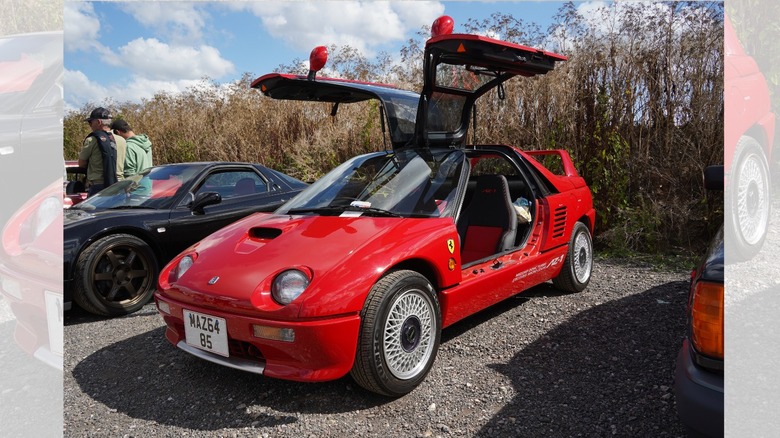5 Cars That Mazda Should Have Never Discontinued
Mazda is one of the more prominent car brands in the world that isn't a under a giant corporation. Mazda did partner with Ford for a number of years — from 1979 until 2015 — but it was never an official subsidiary of the company. Instead, the two corporations worked together to create rebadged models, like the Ford Courier and the Mazda Tribute.
Mazda created some unique models because of its independence from large corporations. Some of these were massive successes, while others weren't as successful, but still retained a cult following in the years after they entered the market. Unfortunately, no matter how great a car model was, it would eventually reach the end of its life — either through changing market conditions, government regulations, or a mixture of both.
However, even if Mazda ended these models, we're always free to wish that they never discontinued them. Or maybe the company could revive these nameplates, like how these classic cars got resurrected years later. But whatever the case, these are some of the cars that Mazda should've never discontinued.
Mazda RX-7
This coupe is one of the most iconic cars ever made — not just in the Mazda lineup, but in JDM history. Mazda built the RX-7 (which meant Rotary eXperiment 7) from 1978 until it ended production in 2002. One of the things that made it special was its use of the rotary Wankel engine, which gave the car its signature brap-brap sound. But aside from this, the car also had an iconic design and performs well despite being priced at just $8,360 to $14,740 brand-new in 1999 (or $15,760 to $27,787 in today's dollars).
Aside from its unique engine and good looks, the car also won races. It won first and second place in the 24 Hours of Daytona in 1979, and was the top car for its class in IMSA GTU for seven years. It also reigned as the IMSA GTO champion for a decade, thus proving the Mazda sports car's racing pedigree.
However, tightening emissions regulations meant that the rotary engine eventually had to go away, and the RX-7 was discontinued in Europe in 1996 because of this. North America continued to have this car until 2002, when it was eventually replaced by its successor, the RX-8. However, the RX-8 model only lasted one generation, with Mazda finally ending the line in 2011. Mazda did make some concept cars based on the RX-7, like the RX-Vision and the Iconic SP. However, none of these models have made it to serial production just yet.
Mazdaspeed3
Mazdaspeed was Mazda's in-house sports division, similar to Toyota TRD, Mercedes AMG, and BMW M. Although it started as an independent racing team, Mazda eventually brought them into the fold in 1999. Mazda released a few Mazdaspeed models, like the Mazdaspeed Portege, Mazdaspeed MX-5 Miata, and the Mazdaspeed6. However, none of Mazdaspeed's offerings were a hit until the Mazdaspeed3 came on the scene.
The Mazdaspeed3 came out in 2007, and had the same engine as the bigger Mazdaspeed6 — a turbocharged 2.3-liter engine mated to a six-speed transmission that put 263 horsepower to the wheels. The Mazdaspeed3 was available as a hot hatch and competed against other sport hatchbacks like the Volkswagen Golf R32 and Ford Focus RS.
This model was successful for Mazda, and it spawned a second generation from 2010-2014. Unfortunately, the third-generation Mazda3 didn't come with a turbo, and even though we already have the 2023 Mazda3 that could be optioned with a turbocharged motor, the legendary Mazdaspeed3 still hasn't made its return. Even though the Mazdaspeed3 has been missing-in-action for almost 10 years now, it's still one of the best tuner cars you can buy today without breaking the bank.
Mazda B-Series
The Mazda B-series is one of the classic mini trucks in the U.S. that we wish Mazda would bring back. But if we had our way, we would rather that Mazda never discontinue this pickup in the first place. The B-series was actually rebadged as the Ford Courier, which interestingly was more popular than the Japanese brand's offering because it sported the blue oval. When Ford released the Ranger compact pickup truck in 1983, Mazda redesigned its B-series truck and released the B2000 in 1986. But in an ironic twist of fate, Mazda released the B2200 in 1994, which was actually a rebadged Ford Ranger.
By 2009, falling sales led to Mazda's discontinuation of the B-series in North America, with Ford discontinuing the Ranger in the U.S. a couple of years later. The Ford Ranger has returned to the U.S. in 2023, but Mazda still hasn't brought back its B-series pickup stateside. However, that doesn't mean that there's no Mazda pickup elsewhere in the world. In fact, Mazda debuted the next-generation BT-50 in 2021, which you can get in the Southeast Asian and Australian markets. We're hoping that Mazda USA brings back this beast to our shores and give us a pickup truck that sports its iconic Kodo design philosophy.
Mazda Cosmo
Mazda's iconic rotary engine first appeared in the Mazda Cosmo, which came out in 1967 and was the company's halo car until 1995. For nearly 30 years, this two-door grand tourer served as the pinnacle of Mazda engineering, which led to the Cosmo being one of the best cars ever built with rotary engines. You could even say that its last generation of the Cosmo, which came out in 1990, was the pinnacle of rotary power, with its triple-rotor setup that had twin turbos.
But what made the Cosmo such a great car was the rotary's smooth power delivery. Even though it was introduced in 1967, SlashGear writer Benjamin Hunting had the chance to take it out for a spin in 2015 in celebration of Mazda's 50 years of rotary power said that it had linear acceleration, and its rotary motor could hit its 7,000 rpm redline "with grace and purpose." He also said, "The Cosmo was more than willing to dance through the corners, turning in with precision, and braking predictably and authoritatively ..."
Mazda planned to launch the Cosmo in the U.S. under its Amati Luxury brand, but the 1991 collapse of the Japanese economy prevented this from happening. This economic downturn also led to lower sales, which was further driven down by the high taxes put on the Cosmo because of its larger size compared to other Japanese two-door sports cars. As Mazda's halo car, it was also one of the most expensive in its lineup, with prices starting at $27,200, and the top-of-the-line models going for over $40,000. So, in 1995, Mazda discontinued the car.
Autozam AZ-1
Although this car doesn't have Mazda in its name, Autozam is actually a Mazda subsidiary that fell victim to the 1991 Japanese economic bubble. The Autozam AZ-1 is a small Japanese Kei car, so it definitely won't make sense in the U.S. with its tiny proportions. However, it has several features that make the AZ-1 a cool and unique automobile — like its gullwing doors, something normally only found on supercars.
One of the most interesting features that would catch the eye of many auto enthusiasts is the AZ-1's engine layout. Instead of the usual front-engine, front-wheel layout you'd find on most affordable sports cars like the 2023 Mazda MX-5 Miata, this cute little car had a mid-mounted engine that drove the rear-wheels, giving it a well-balanced, dynamic drive. Even though its diminutive 657cc engine only delivered 63 horsepower and 63 lb-ft of torque to its wheels, it did so via a five-speed manual.
Its small engine and size might feel like it's an underpowered toy. But given that it only weighs 1,587 lbs., you really don't need that much power to get going. Also, this car wasn't built to beat big, hulking V8-powered muscle cars on the quarter mile. Instead, it was designed to be nimble around the track, where you can throw it around without worrying about losing control.
Unfortunately, the AZ-1 was discontinued in 1994 after having just sold 4,392 copies. But because there were so few AZ-1s, prices for the car today could go up to $20,000. It's still in demand after all these years because of its unique look and size. People still want it even if it's not as fast — besides, it's much more fun to drive a slow car fast, than to drive a fast car slow.
